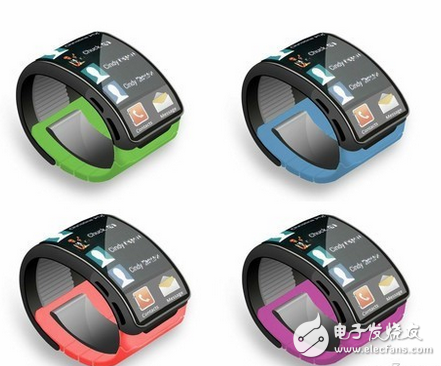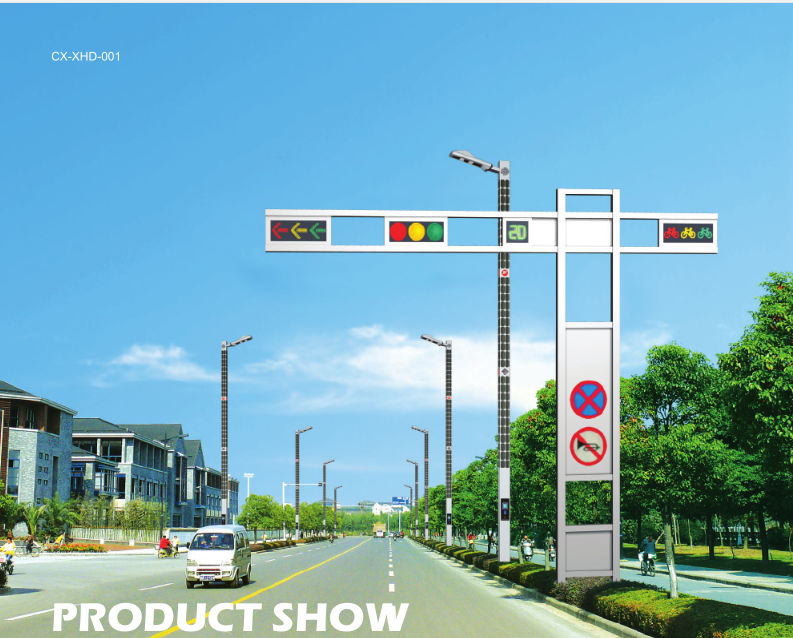From the International Consumer Electronics Show (CES), the Global Mobile Communications Conference (MWC) to the Computex in Taipei, a new wave of wearable devices driven by Apple's Apple Watch has been hit by technology booths. Whether it is a startup company or a brand manufacturer, they are competing to showcase wearable devices such as smart glasses, smart watches, and fitness wristbands, and actively seize market opportunities. Undoubtedly, wearable technology is quickly becoming the focus of the next generation of information products. However, wearable technologies that are in the early stages of development still face many limitations and challenges. Especially when the market is optimistic that wearable devices will rewrite the consumer technology map, what obstacles will affect their growth? How will the relevant industry respond and break through?

In fact, since 2014, many major manufacturers such as Samsung, LG, Mi, and Nike are actively investing in the development of wearable devices, such as smart watches and sports bracelets. Focus on product development direction. Samsung exhibited the upcoming smart watch at CES this year. The Apple Apple Watch launched in April also attracted the purchase of tides, while the Xiaomi (Mi) sports bracelet hit the market with a low-cost strategy, which also caused a lot of people to follow the crowd. According to the Juniper Research research report, the market for wearable devices will grow three times in 2018, from 19 million units to 60 million units. Juniper Research also predicts that in the next few years, wearable devices will move toward M-type, and one type will become more and more complicated, just as smart watches combined with measuring various physiological information, but also as an extension of smart phones. And has call alert, music playback and access to a variety of applications. Or professional wearable devices developed in combination with medical related fields, the measurement accuracy is relatively high, and the measured data can be actually used as the basis for doctors' treatment; while the other type attracts consumers at low prices, but More functional products than Yangchun. In addition, according to market research firm IDC, the market for wearable devices is expected to grow from 19.6 million units in 2014 to approximately 45.7 million units in 2015, with an annual growth rate of 133.4%. By 2019, we will see 126 million units, and the five-year average compound growth rate (CAGR) will reach 45.1%. The extent to which products are popular with consumers and the optimism of market-adjusted units on the development of the wearable device market seem to predict that the wearable device market will be a new field to help manufacturers create the next wave of revenue, so not only terminal devices Manufacturers, component manufacturers, and IC design companies are targeting product development in wearable devices.
Smart watches blend into smart homes
The market regulators believe that the main applications of wearable devices today are sports bracelets, smart watches or medical-related measuring devices, and the more recent ones are smart watches. James Bruce, global marketing director of the ARM mobile market, is also optimistic that smart watches will become the first choice for wearable devices. "Watch products will obviously be the main application of this technology, and now we are at the beginning of this growth market. However, Compared with other wearable devices, smart watches are obviously more like auxiliary tools for smart phones. The functions of smart phones can also be seen on smart watches. Unlike the functions of wearable medical devices, the functions of wearable medical devices are more clearly focused on Measure and monitor various physiological information.
With the gradual expansion of the Internet of Things (IoT) application, mobile phones have entered the smart home and become the remote control tool for smart home systems. Not only that, mobile phones have also become the remote control for home appliances. Can a smart watch as a smart phone accessory become a member of a smart home application like a mobile phone? That is to say, consumers in the future can also control air conditioning, lighting, etc. through smart watches. Rich Nelson, senior vice president of marketing for Broadcom's Broadband Communications and Connectivity Group, believes the answer is yes.
This is due to the purpose of the Internet of Things and networking for everything. Since smart watches are an extension of smart phones, natural smart watches should also be used as control devices for smart homes. More importantly, even if smart watches have a new direction in the future, they are no longer the 'accessories' of smart phones, and they can be connected to many smart home devices. However, it is worth noting that as an auxiliary device for smart phones, it also poses certain challenges for smart watches to enter smart homes. Nelson said that whether it is Apple or Samsung, or smart watches using iOS or Android systems, it can only be connected with smart phones of their own brands, so it is necessary to connect with gateways (Gateway) and smart TVs in smart homes. , lighting systems, air-conditioning and other equipment connections, and even further control, it is necessary to further develop relevant application software, firmware, and even in the case that the standard specifications common to smart homes have not yet been released, the current smart home control system is also relatively closed, each The manufacturer has its own system, and the smart watch does not mean that it can be imported smoothly.
Jump off accessories role wearable to seek niche applications
As wearables continue to evolve, an interesting topic is whether wearables will replace smart phones in some important applications. In this regard, the views of industry players and analysts are very polar. One faction believes that wearable devices such as smart watches can only be used as accessories for smart phones, extending to display information or alert users. Another faction believes that wearable technology will become a stand-alone device with the main purpose of collecting data. Jeff Baer, ​​director of product marketing at Broadcom's Broadband Communications and Connectivity Group, points out that “the smart phone is interesting because it is the only consumer electronics device that has grown in size over time, because users like to watch it. The demand for applications such as video and games. Drives wearable devices in many cases, although it is only an extension of smart phones, but some specific applications will be optimized for wearable devices in the future, while some applications are only applicable. Smart phones. Therefore, smart phones and smart loaders will perform different functions separately, seeking complementarity for different application areas without replacing them."
Wearables certainly won't completely replace smart phones, but Bruce makes it clear that smart watches that support Near Field Communication (NFC) are easier to use, smarter than mobile payments or for applications such as homes or cars. Mobile phones have the opportunity to become mainstream applications. Su Shimeng, senior deputy general manager of Andes Technology and General Manager's Office, said that smartwatches are just a scaled-down version of smart phones, and for app developers, they only need to develop intelligence that can be extended to smart watches. The mobile app (App) can be used, the developers are relatively fast, and the cost recovery is faster. However, the application development of smart watches should not be so "limited." Su Yumeng emphasizes that smart watches and smart glasses are not the 'killer' application of wearable devices. Google's smart glasses have been 'dead to death', and smart watches are only used as extensions of mobile phones. The acceptance of such products is yet to be tested. In fact, the more viable wearable device end products are devices that measure physiological data such as blood glucose meters, body temperature/sphygmomanometers, etc., and are placed on the body rather than just on the hand. Nelson added that the main application areas of wearable devices such as smart watches are still unclear, and various manufacturers are still looking for them. As an accessory of smart phones, it is only one of them. It is expected that there will be more suitable smart devices in the future. Show the application market.
Low power consumption and high efficiency
Pankaj Kedia, senior director of Qualcomm and head of the cocoa wearables division, said, “Wearable devices will experience the same development cycle as smart phones in the past 10-15 years – once users are connected, they will start to demand a better experience. Today, we are at the beginning of the wearable device development cycle. When a wearable device is connected to a mobile phone or other device, users will want all the features on the phone to be implemented on the new device, and must have low power consumption. "The user experience becomes critical. However, after the launch of the Apple Watch, the user's 'poor' experience is mostly very power hungry. In the case of the wearable device itself, especially the device responsible for detecting physiological information, if the power consumption is fast, it is necessary to spend the night sleep time to charge, so that it will not be able to monitor for 24 hours at any time, and the medical monitoring related wearable device will also Useless.
However, in order to achieve ultra-low power consumption characteristics of wearable devices, the functions of the products have to be more prosperous. Products with more functions, complex and smarter wearable products can only compromise to power consumption. Is it possible to choose between a low-power and high-performance wearable device, and can't have both fish and bear's paw? With the efforts of microcontroller (MCU) operators, wearable devices with low power consumption and high efficiency are expected to be realized. Jean-Julien Pegoud, product line marketing manager for microcontroller products in the STMicroelectronics, Memory and Secure Microcontroller Group, said that the ARM Cortex-M4-based microcontroller is characterized by High performance, but the low power part can not be compared with other cores such as Cortex-M0. However, through the 'individual' technology of various microcontroller manufacturers, the Cortex-M4 microcontroller can now achieve ultra-low power consumption while retaining high-performance features.
Push up the wireless charging market
Battery life is undoubtedly a major challenge for wearable devices. Baer pointed out, "As long as you forget to charge a few times, users may be short of interest in this device. Unless you find effective solutions to solve the power problem, such as energy harvesting and wireless charging, there is an opportunity to promote the growth of the wearable device market. Therefore, the development of wearable devices has also spawned new application opportunities, one of which is wireless charging. Su Yumeng said that the biggest taboo of wearable devices is that they need to be removed from the body at any time. Therefore, Japan and South Korea developed wireless charging devices for wearable devices last year, allowing consumers to charge anytime, anywhere, even though such products At present, the water temperature is still being tested, but Jingxin Technology believes that wearable devices will add new applications to wireless charging. Baer also agrees with this view. He is optimistic that wireless charging is expected to be the ultimate charging solution for next-generation devices. It is expected that wireless charging services will begin in restaurants or fast food restaurants, and wait until the wireless charging ecosystem is improved. It is expected to overcome the power supply challenges of wearable devices. However, it is worth noting that whether wireless charging technology has an impact on medical wearable devices will be a problem that is of particular concern to the relevant industry when developing products.
The traffic signal lamp is to enhance road traffic management,reduce traffic accidents,improve road use efficiency,a kind of important equipment to improve traffic.Modern lighting according to the requirements of users can install electronic monitoring system and traffic safety facilities design,traffic safety for the city civilization a contribution.Our company's signal light series products mainly include Solar mobile Traffic Signal lights,Cantilever type Traffic Signal Lamp,Cantilever type Traffic Signal Lamp.

Traffic Equipment Series,Traffic Equipment Rental,Traffic Equipment Company,Safety Traffic Equipment
Jiangsu chengxu Electric Group Co., Ltd , https://www.satislighting.com